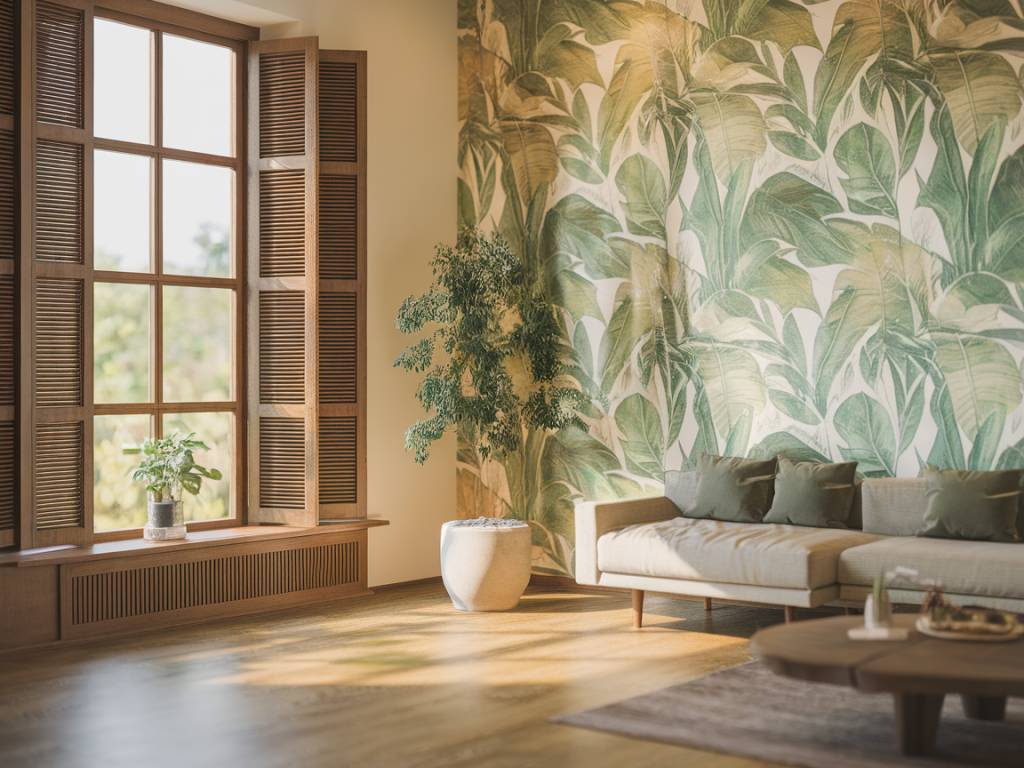Imagine sitting in your living room, a gentle breeze rustling through the leaves of an indoor plant, natural sunlight streaming in through the windows, and a sense of calm enveloping you. This is the essence of biophilic design—a design philosophy that aims to bring the rejuvenating qualities of nature indoors. As a specialist in the world of interior design, I’ve seen how this approach can transform a space, not only aesthetically but also in promoting well-being.
The Philosophy of Biophilic Design
At its core, biophilic design is about cultivating a strong connection between our indoor environments and the natural world. But why is this important? In our modern, fast-paced society, we often find ourselves disconnected from nature. Biophilic design seeks to bridge this gap by embedding elements of nature into our interiors, serving as a gentle reminder of the natural world that sustains us.
Studies have shown that incorporating aspects of nature into our living spaces can reduce stress, enhance creativity, and improve our overall mood. Isn’t it fascinating to think that something as simple as a plant or a water feature could have such a profound impact on our daily lives?
Natural Elements to Incorporate
To start your journey into biophilic design, consider integrating the following natural elements into your space:
- Plants: Introducing greenery into your home can purify the air and add a sense of tranquility. Whether it’s a towering fiddle leaf fig or a humble succulent, plants can create a lively, inviting atmosphere.
- Natural Light: Maximize the amount of natural light in your space by using sheer curtains or strategically placing mirrors to reflect light. Sunlight not only brightens a room but also boosts your mood and well-being.
- Water Features: The sound of flowing water can be incredibly soothing. Consider adding a small indoor fountain or even an aquarium. These elements can evoke a sense of peace reminiscent of a gentle stream or ocean shore.
- Natural Materials: Incorporate materials such as wood, stone, and bamboo to add texture and warmth. These materials bring a tactile connection to nature within your home.
Design Strategies for a Biophilic Home
Incorporating biophilic design isn’t just about adding natural elements; it’s also about creating spaces that evoke experiences of being in nature. Here are some strategies to create a truly immersive biophilic home:
- Create Nature-Inspired Layouts: Mimic natural patterns and forms in your layout. Avoid rigid, unnatural lines and instead opt for organic, flowing shapes that emulate the way nature intersects and intertwines.
- Layer Textures and Tones: Just as in a forest where layers of foliage create depth, use textiles, rugs, and furnishings with varied textures and tones to create a rich sensory experience.
- Build Sensory Stimuli: Engage all senses with your design. Use aromatic plants for scent, a playlist of nature sounds for auditory stimuli, and earthy tones for visual warmth.
Personal Stories and Anecdotes
As a long-time advocate for biophilic design, I recall a project where a young couple wanted to transform their city apartment into a lush, verdant oasis. By introducing hanging gardens and strategically placed skylights, we were able to create a breath of life in the urban setting. The transformation was remarkable—not only did the space feel more expansive and vibrant, but it also became a sanctuary for the couple, offering respite from their bustling city lives.
Biophilic design is not just a trend but a reconnection to our roots. As we bring elements of nature indoors, we invite the well-being that comes naturally with it. Have you ever considered how a simple plant or a beam of sunlight might alter the energy of your space?
Choosing the Right Biophilic Elements for Your Home
When choosing biophilic elements for your home, think about what resonates with you personally. Do certain plants remind you of your childhood home? Does the sound of water transport you to tranquil vacations by the sea? Personal connections to natural elements can greatly enhance the effectiveness of your biophilic design.
If you’re new to plant care, start with low-maintenance options like snake plants or pothos. For those ready for a more elaborate touch, hanging planters or indoor vertical gardens can dramatically transform your space.
Embrace the Journey
Biophilic design is more than just a design choice—it’s a lifestyle embrace. As you embark on enhancing your home with nature’s touch, remember that this journey is deeply personal. Take cues from the outdoors, listen to your instincts, and create a space that resonates with your soul.
Isn’t it time we brought more of the outside in, letting nature breathe life into our homes? In doing so, we not only transform our spaces but also awaken a deep sense of tranquility that mirrors the outside world.



